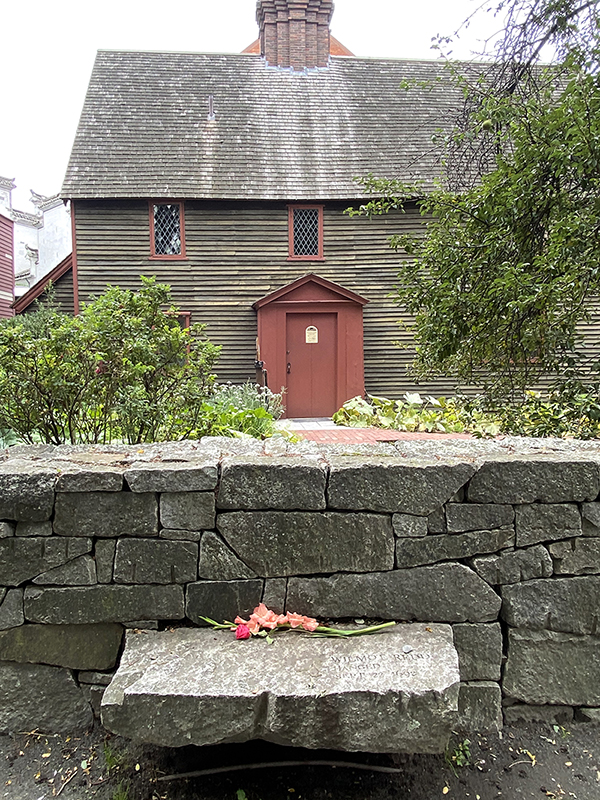A witches’ brew awaits in Salem, Mass.
Break out the pumpkin spice and don your favorite political costume. It’s that time of year again. And don’t worry about the calories. Those choco-bars are fun-sized! They’re specifically designed to be scarfed down by the dozen.
As most of you know, Halloween had its origins with the Celts, and in particular, the celebration of Samhain, the winter solstice, when the harvest was over and the long, hard days of winter were coming. It was believed to be a time when the portals to the other world were open and spirits could pass more freely between worlds.
The Witch Trials
However, you might not have had the pleasure of visiting the epicenter of ghosts and ghouls in America, probably the scariest, tackiest and yet most wonderful of all American Halloween destinations—Salem, Massachusetts. Believe me, the tourist industry aside, it’s the real deal.
Salem is famous first and foremost for the Witch Trials, which took place in 1692-93. More than 200 people were accused of being witches and warlocks and thirty were found guilty. To quote the band Rush, from their song Witch Hunt, “The righteous rise with burning eyes of hatred and ill-will. Madmen fed on fear and lies to beat and burn and kill.”
The first victim was Bridget Bishop, a sixty-year-old woman, who ran two taverns with her third husband Edward. She enjoyed wearing exotic clothes in bright colors. She was accused of bewitching five young women. To be sure, the witch hysteria had swept through Europe in the previous decades.
Bishop was hanged on June 10, 1692. She was the first of nineteen hanged that year, fourteen females and five males.
A man named Giles Corey was pressed to death on Sept. 19, 1692. He endured three days of pressing for refusing to plead guilty or not guilty. Pressing was a technique the courts used to “encourage” cooperation, where more and more weight would be piled onto the victim, who was laid on the ground. Having not pled and not being found guilty, Corey was able to pass on his land and wealth to his offspring. Otherwise, it would have become the government’s.
Scholars have argued that the gruesome way in which Corey died helped to turn the tide against the Witch Trials in public opinion.
Elizabeth Johnson Junior, who was accused, but never executed was the last of the 200 accused to be exonerated. That was due to the efforts of an eighth grade teacher and her class from North Andover, Mass…. in 2022.
Today, there’s a memorial in Salem to the nineteen who were hanged, as well as Corey, who was pressed to death. However, there were an additional five, who died in prison, likely due to torture or maltreatment. Included in those was Mercy Good, born in prison to Sarah Good, who was hanged. Yes. She was born to an accused witch in prison and died in prison after her mother was hanged. The concept is wholly unfathomable.
In 2009, a couple purchased a home overlooking a wooded ledge in Salem. They were perplexed when visitors stopped by to photograph an empty lot on the property, tucked between houses and overlooking a Walgreens. It turns out, that site was where witches were hanged and their bodies summarily dumped into a low spot beneath the ledge, known as the “crevice.”
Townsfolk in 1692 could hear relatives of the victims crying at night and carrying away the bodies of their loved ones, to be buried elsewhere.
Through a community grant and donations from descendants of the Witch Trial victims, a memorial was erected on the site.

Wilmott Redd was hanged on Sept. 22, 1692, as part of the Salem Witch Trials, along with six other women and one man. It was the single most prolific execution day of the trials. Today, there is a memorial to the victims of the Salem Witch Trials, each with a plot like this one for Wilmott Redd. Five others died in prison through maltreatment or torture, including Mercy Good, who was born in prison to an accused witch, and died there.
House of Seven Gables
Aside from the Witch Trials, Salem boasts one of the country’s most famous residences, the House of Seven Gables, associated through Nathaniel Hawthorne’s novel of the same name with the supernatural and witchcraft. Some of Hawthorne’s ancestors played a part in the Witch Trials.
Originally built in 1668, the house still stands, but has been through a couple of major changes, the last of which, in 1908, restored its perceived original appearance. It is now part of a museum complex, including Nathaniel Hawthorne’s birthplace and several other period buildings.

This is the infamous House of Seven Gables, the home around which Nathaniel Hawthorne’s book of the same name was written. The novel was full of references to the supernatural. The building underwent changes through the centuries, but in 1908, it was restored to its perceived original appearance.
Around Salem
Depending on when you venture to Salem, the crowds will vary. Obviously, a trip in the latter days of October is going to be different from a week in May. Likewise, the cost of accommodations will rise during the witching season. Plan accordingly.
The town of Salem is located north of Boston and is built around the supernatural. There are all manner of psychics and witch museums, knickknack shops and historical buildings. It is also a seaport, so anyone wanting to catch a view of the Atlantic Ocean won’t be disappointed.
I’d recommend taking in the Witch Trial Memorial and the adjoining graveyard. It’s noteworthy that none of the victims are buried in the graveyard, although you’ll find judges who sentenced the poor souls to death. After having been found guilty of witchcraft, the victims were not allowed to be buried in Christian burial sites. Nobody really knows where they are buried.
If you’d like to continue on the road to introspection, the memorial located at the site of the hangings will fit the bill.
No posts have been published yet.










